Giro d'Italia 2012: Five key stages
Mountains still the decider despite more balanced route
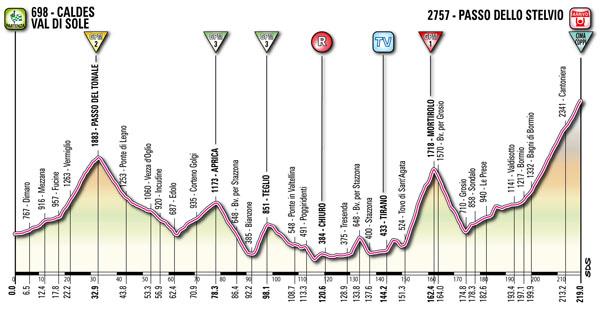
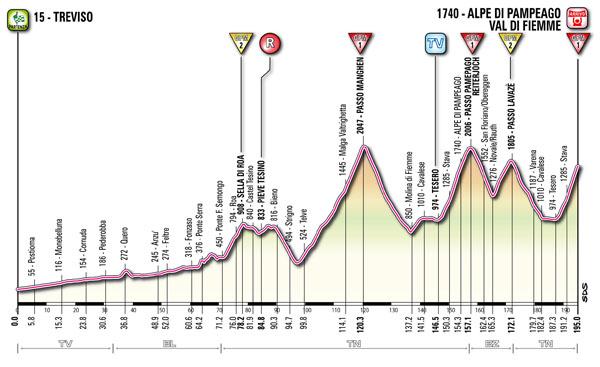
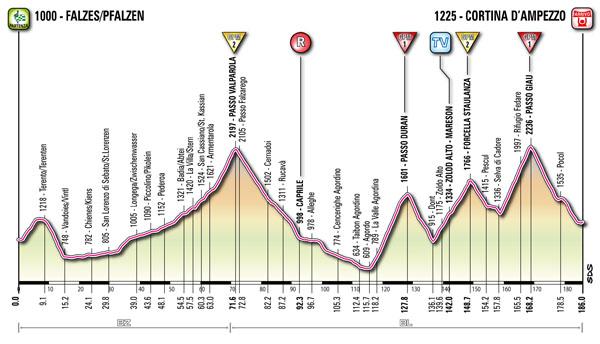
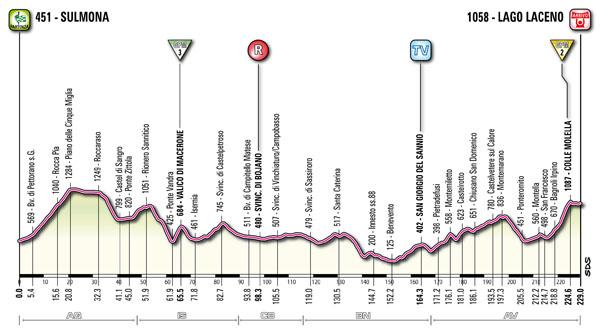
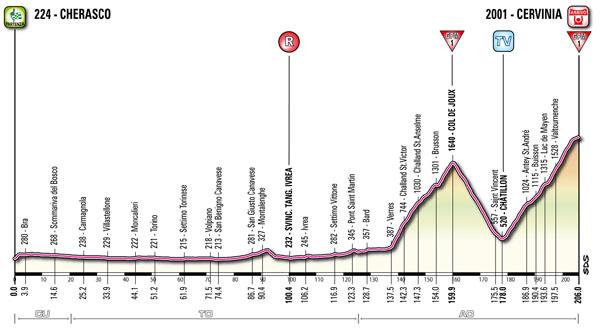
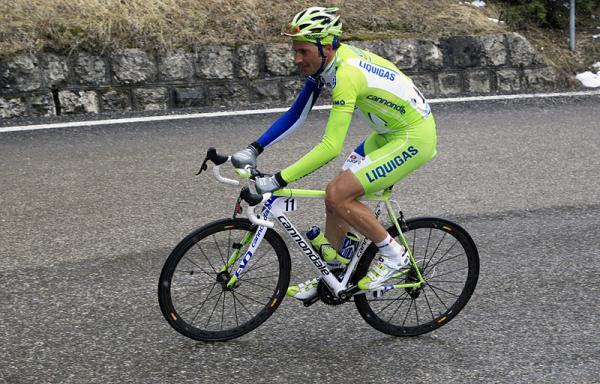
“A more human Giro” has been the refrain ever since new race director Michele Acquarone unveiled the route in Milan last October, as if the corsa rosa were imposing its own austerity measures on the lengthy transfers, unmade roads and consecutive mountain stages that marked the greatest excesses of the Angelo Zomegnan era.
A cursory comparison of the courses of the 2011 and 2012 Giri certainly bears out the impression that the spettacolo quotient has been reined in significantly. There may be murmurs of discontent about the early transfer from Denmark to Verona, but it is still a far more palatable proposition than the lengthy trek from Sicily to Austria that the race convoy faced in the space of five torrid days last year. The gravel roads of Tuscany and Umbria are eliminated, too, while that most underprivileged demographic of recent Giri, the sprinters, will be granted far more succour than the meagre three stages they were allotted twelve months ago.
Yet, while on balance, the peloton’s own 99% should get more of a look in this time around, the tifosi can rest easy in the knowledge that the elite contenders will still decide the order of business with some rather exclusive summit meetings. The most ardent of Giro dreams can be dashed on any one of the 21 stages, of course, and the team time trial in Verona and the concluding test in Milan in particular might see some hopes fray or even unravel, but overall victory at the 2012 Giro d'Italia should ultimately be stitched together in the five key mountain stages outlined below.
Stage 8: Sunday, May 13. Sulmona-Lago Laceno. 229km
There has been some rather public chagrin at the lack of stages in southern Italy, but as if by compensation, the race’s southernmost point should also mark the first major shake-up of the general classification. The previous day sees the first summit finish at Rocca di Cambio, but the Abruzzo climb will scarcely be sufficient to unduly trouble the overall contenders, even if the likes of Joaquim Rodriguez (Katusha) should be on the offensive.
If previous history is anything to go by, however, stage 8 to Lago Laceno, near Avellino, might well provide an interesting, if not wholly accurate, guide as to what is to follow later in the race. The gruppo will face heavy, rolling roads for much of the day, before tackling the second category Colle Molella (9.9km at 5.7%) in the finale. It’s very much a climb of two halves – after a gentle introduction, the gradient kicks up to 12% closer to the top, and the overall contenders will have an early opportunity to make the difference before an unusual four kilometre plateau brings the race from the summit to the finish line at Lago Laceno. The time won and lost will not be significant, but the psychological sparring begins in earnest here.
An intriguing afternoon of action unfolded when the Giro came to these parts in 1998. Pink jersey Michele Bartoli sparked the attacking, and then Marco Pantani himself went clear before Alex Zülle offered the firmest of rebuttals, catching and then passing Il Pirata with startling ease as the road flattened out to assume the overall lead. Zülle’s joy would be short-lived, however, as he endured a rather unsavoury collapse in the final week (see Willy Voet’s Breaking the Chain for the sordid details), and Pantani fought back to win the Giro.
Get The Leadout Newsletter
The latest race content, interviews, features, reviews and expert buying guides, direct to your inbox!
Stage 14. Saturday, May 19: Cherasco-Cervinia. 206km
The first bona fide mountain stage of the Giro is something of a slow burner, with 140 flat kilometres bringing the peloton from Cherasco into the Alps and to the foot of the first climb, the Col de Joux. 22 kilometres in length with an average gradient of 5.6%, the Joux kicks off a breathless finale. Its steepest section comes right at the bottom, and the transition from big to small ring could prove brutal for some, after two weeks of sprinters’ stage interspersed with sinuous days suited to the puncheurs.
The Col de Joux flattens out briefly around two-thirds of the way up, before the gradient kicks in again once more closer to the summit. With no valley between the descent of the Joux and the final climb to Cervinia, this sector is an enticing springboard for those with designs on stage victory. When the Giro last visited Cervinia in 1997, the race tackled the Col Saint Pantaleon rather than the Joux beforehand, but the principle was the same, as Ivan Gotti availed of very similar circumstances to dance clear on the penultimate climb and ride into the pink jersey.
Though not blessed with the same lofty reputation as its cousins in the Dolomites, the road to Cervinia still climbs for 27 kilometres, with only the mildest of respites around halfway up. A typical Alpine climb, it features long, steady stretches (its average gradient is 5.6%) that should provide an interesting indication of Ivan Basso’s shape. If he is on song, the Liquigas-Cannondale man’s gregario di lusso Sylvester Szmyd might spend much of the climb setting the tempo on the front.
Stage 17. Wednesday, May 23: Falzes-Cortina d’Ampezzo. 186km
A demanding day in Alessandro Manzoni country on the road to Pian dei Resinelli on stage 15 will ask further questions of the overall contenders, while a subtly exacting stage 16 to Falzes should draw some more sting out of the their legs ahead of the Giro’s belated entry into the Dolomites.
The Passo Valparola (14.1km at 5.5%) offers a prelude of what is to come, but the stage’s true difficulties are all shoehorned into the final 70 kilometres. The formidable Passo Duran (12.2km at 8.1%) is followed in rapid succession by the second category Forcella Staulanza (12.3km at 6.9%), and there is precious little respite to be had before the final climb of the Passo Giau. The 10km ascent’s steepest 14% pitches come at the bottom, but it is scarcely much easier thereafter.
Last year, the Giau featured on the toughest stage of the race to Gardeccia, but with Alberto Contador already safely ensconced in pink and with two more passes still to come, there was little movement among the big names. Its positioning this time around should ensure that the likes of José Rujano (Androni Venezuela), and Michele Scarponi (Lampre-ISD) are more active, while the 17km plunge to the finish in Cortina d’Ampezzo will also provide thrills of its own. Vincenzo Nibali forged clear here last time, it remains to be seen who will take up the Sicilian’s baton on the descents in his absence, although his Liquigas teammate Basso might view this finale with some trepidation.
Stage 19: Friday, May 25: Treviso-Alpe di Pampeago. 198km
The troika of Dolomite stages in the final week is mercifully broken up by a short, flat run to Vedelago on stage 18, a move which the organisers are hoping will encourage inventive racing in the closing days rather than see the Giro descend into a grim war of attrition as heavy legs and tired minds abound.
Once again, there is a relatively gentle beginning to proceedings with the third category Sella di Roa (7km at 6.6%) the only obstacle in the opening half of the stage. The imposing Passo Manghen (20.5km at 7.4%) heralds something of a call to arms, however, and the slope cruelly grows steeper as it drags inexorably onwards, with stretches of 15% near the summit.
Next up is the climb of Pampeago (10.5km at 9.8%) itself, which the peloton must tackle twice. The first time, they will grind past the finish line and upwards to 2006 metres, cresting the summit of the Passo Pampeago. After a rapid descent, they must loop back over the short Passo Lavazé (6.3km at 8.6%) before rolling into Tesero once again to repeat the first 7.7km of the climb of Pampeago.
The finish at Alpe di Pampeago has become something of a favourite in the modern Giro, ever since Pavel Tonkov outsprinted Marco Pantani in 1998, although the winner here has only once gone on to take overall honours, in 2003, when Gilberto Simoni laid waste to the Giro’s summit finishes.
Stage 20: Saturday, May 26: Caldes/Val di Sole-Passo dello Stelvio. 219km
Whereas recent Giri have tended to crash from mountaintop to mountaintop over the course of the three weeks with all the carefree abandon of an action blockbuster, this year’s race is pitched as a rather more subtle, psychological thriller. The organisers have scripted a slow-burning route that slowly rises to a crescendo, with the gripping denouement planned for the long haul up the almost ethereal Stelvio.
The tappone was supposedly designed via the magic of social networking, emblematic of the Giro’s enthusiastic embracing of new media, but marketing ploy or not, there can certainly be no denying that the 219km stage engages pleasingly with the rich history of the race. The opening climbs of the Passo del Tonale (15.1km at 6.1%), Aprica (15.9km at 3.1%) and Teglio (5.9km at 8%) should not cause too many problems on paper, but after three weeks of racing, there will be many beginning to feel the strain even before the race reaches the penultimate climb, the Mortirolo (11.4km at 10.5%). Though approached from its “easier” side, the Montagna Pantani should still cause problems, even if one suspects most will look to keep their powder dry for the grand finale up the mighty Stelvio.
The race’s most iconic episode on the Stelvio came on its first in visit 1953, when Fausto Coppi conjured up one of the last truly great performances of his career to snatch the pink jersey from Hugo Koblet at the death, while its most exciting finish came when the hitherto unheralded Fausto Bertoglio held off Franciso Galdos to seal overall victory on the final day in 1975.
The organisers will be praying that the margins are be as tight on the eve of the Stelvio this time around, but in any case, the stage is set to be an historic one. Weather permitting, the 2757 metre-high Cima Coppi will become the highest ever summit finish at a grand tour, as the survivors of the Giro haul themselves up the Stelvio’s 22.4 kilometres and 12% slopes.
But then, as Il Corriere della Sera’s Orio Vergani put it after watching Coppi on the Stelvio in 1953, “translating it into numbers serves to document it, but also to diminish it.” Come May 26, one hopes that actions and emotions will again speak louder than statistics. A more human Giro indeed.

Barry Ryan was Head of Features at Cyclingnews. He has covered professional cycling since 2010, reporting from the Tour de France, Giro d’Italia and events from Argentina to Japan. His writing has appeared in The Independent, Procycling and Cycling Plus. He is the author of The Ascent: Sean Kelly, Stephen Roche and the Rise of Irish Cycling’s Golden Generation, published by Gill Books.